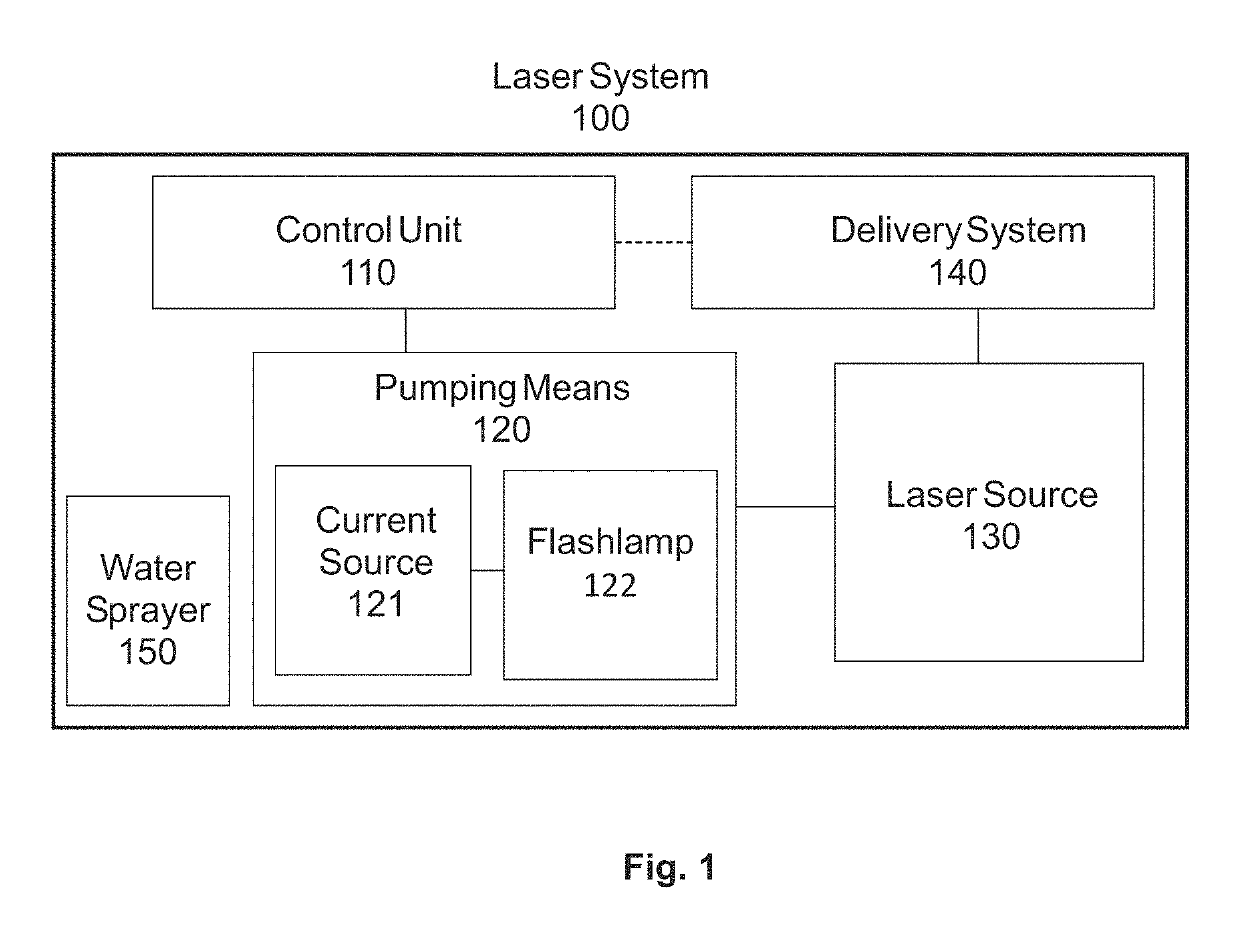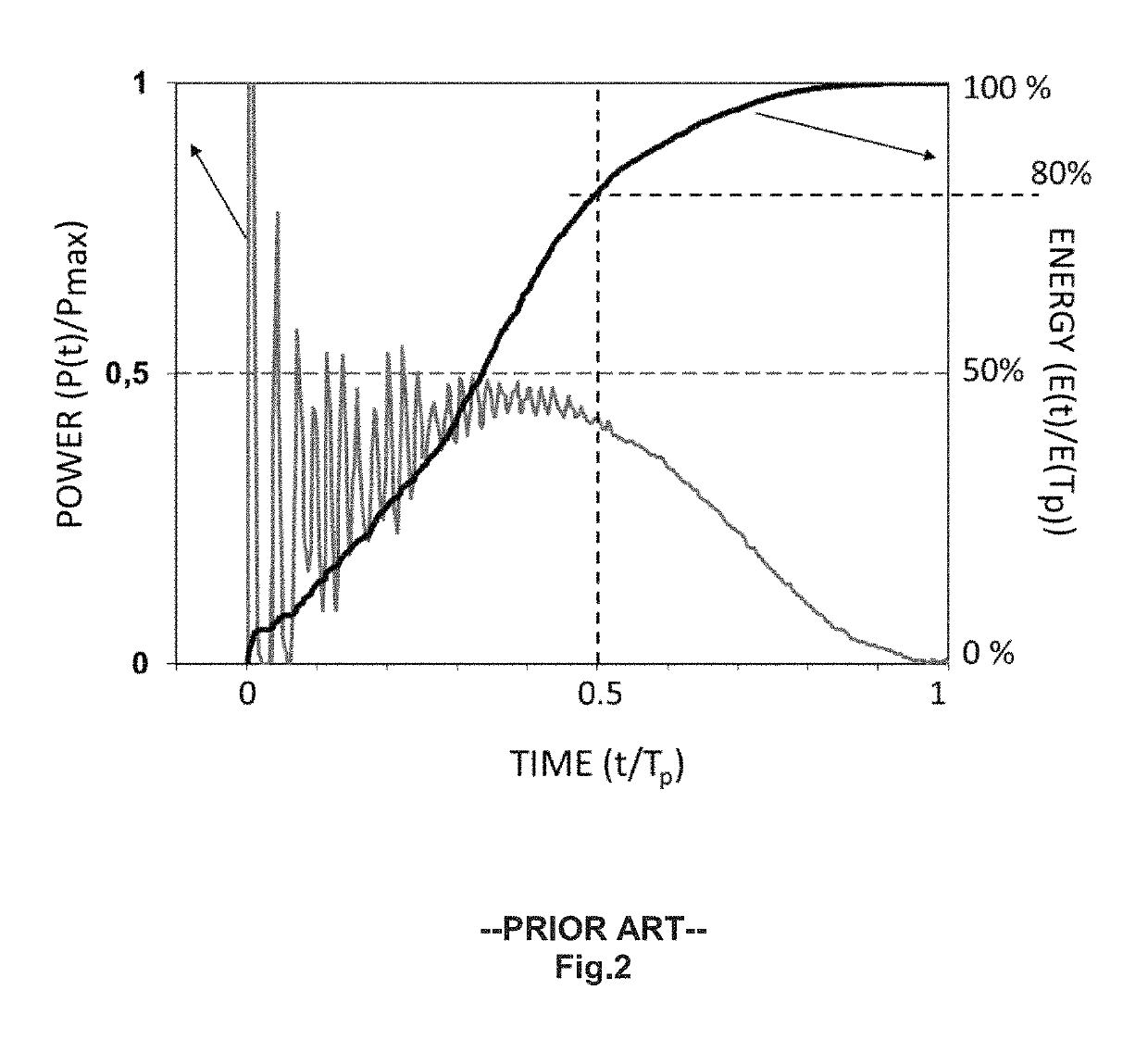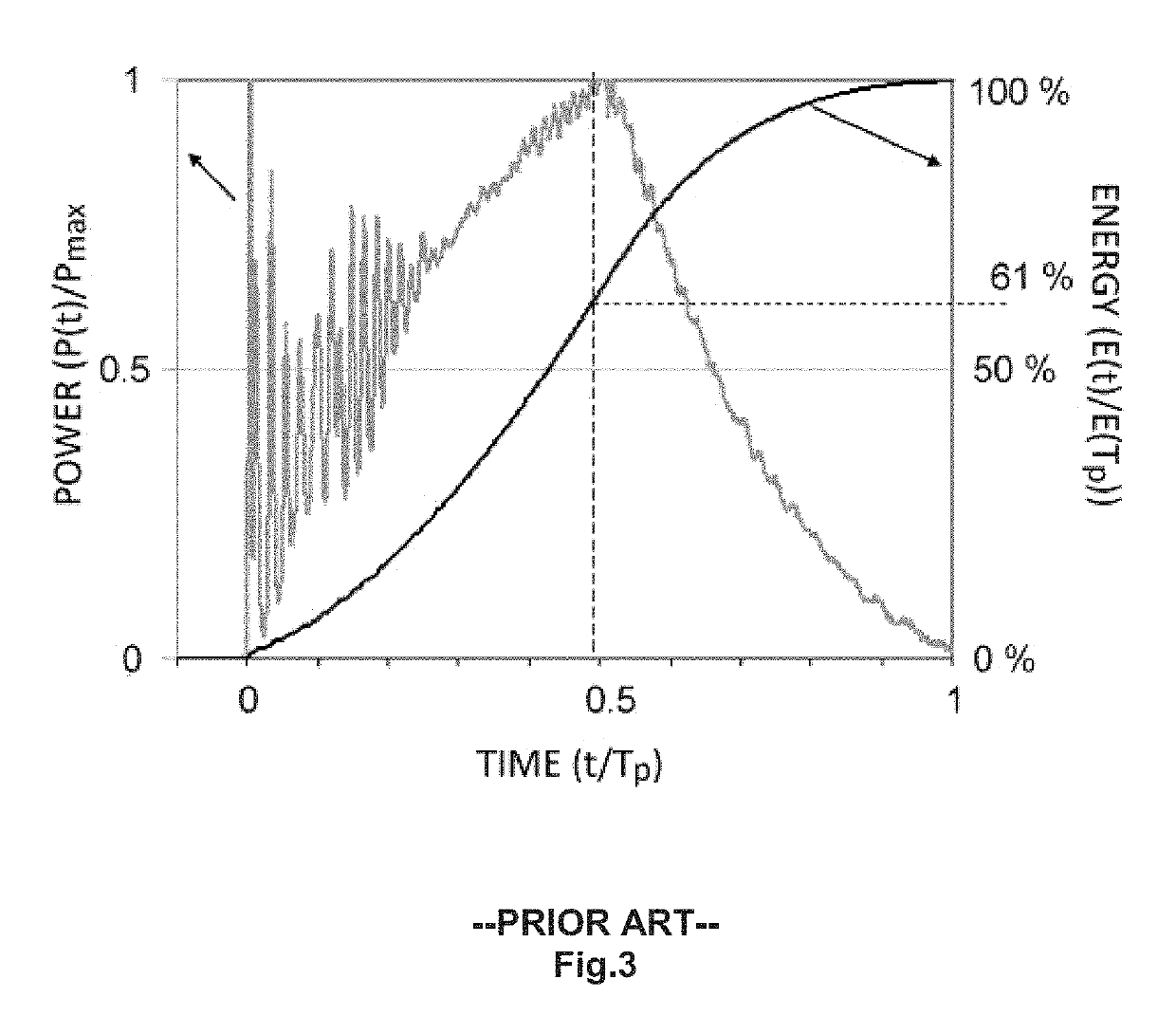Laser system and method for controlling the laser pulse shape
a laser system and temporal shape technology, applied in the field of laser system and methods for controlling the temporal shape of laser pulses, can solve the problems of non-specific thermal damage to adjacent tissue, maximum temperature differences between the target and adjacent structures, and the difficulty of controlling the effects of heat diffusion, so as to reduce the initial high laser intensity spiking
- Summary
- Abstract
- Description
- Claims
- Application Information
AI Technical Summary
Benefits of technology
Problems solved by technology
Method used
Image
Examples
embodiment 1
[0088]Laser system for medical treatment, comprising:[0089]a pump,[0090]wherein the laser system is adapted to be operated in pulsed operation so that at least one laser pulse of a temporally limited pulse duration (Tp) is generated,[0091]wherein said laser pulse irradiates some part of the human or animal body so that a two-dimensional laser spot S is located on the top layer of the irradiated part of the human or animal body; and[0092]wherein the pump power of the pump is modulated in such a way that the cumulative energy ES(Tp / 2) which is delivered by said laser pulse to said laser spot S during the first half of the pulse duration is less than 45% of the energy ES(Tp) which is delivered by said laser pulse to said laser spot S during the entire pulse duration Tp.
embodiment 2
[0093]Laser system according to embodiment 1, wherein the cumulative energy ES(Tp / 2) which is delivered by said laser pulse to said laser spot S during the first half of the pulse duration is less than 35% of the energy ES(Tp) which is delivered by said laser pulse to said laser spot S during the entire pulse duration Tp.
embodiment 3
[0094]Laser system according to embodiment 1, wherein the cumulative energy ES(Tp / 2) which is delivered by said laser pulse to said laser spot S during the first half of the pulse duration is less than 25% of the energy ES(Tp) which is delivered by said laser pulse to said laser spot S during the entire pulse duration Tp.
PUM
 Login to View More
Login to View More Abstract
Description
Claims
Application Information
 Login to View More
Login to View More - R&D
- Intellectual Property
- Life Sciences
- Materials
- Tech Scout
- Unparalleled Data Quality
- Higher Quality Content
- 60% Fewer Hallucinations
Browse by: Latest US Patents, China's latest patents, Technical Efficacy Thesaurus, Application Domain, Technology Topic, Popular Technical Reports.
© 2025 PatSnap. All rights reserved.Legal|Privacy policy|Modern Slavery Act Transparency Statement|Sitemap|About US| Contact US: help@patsnap.com



